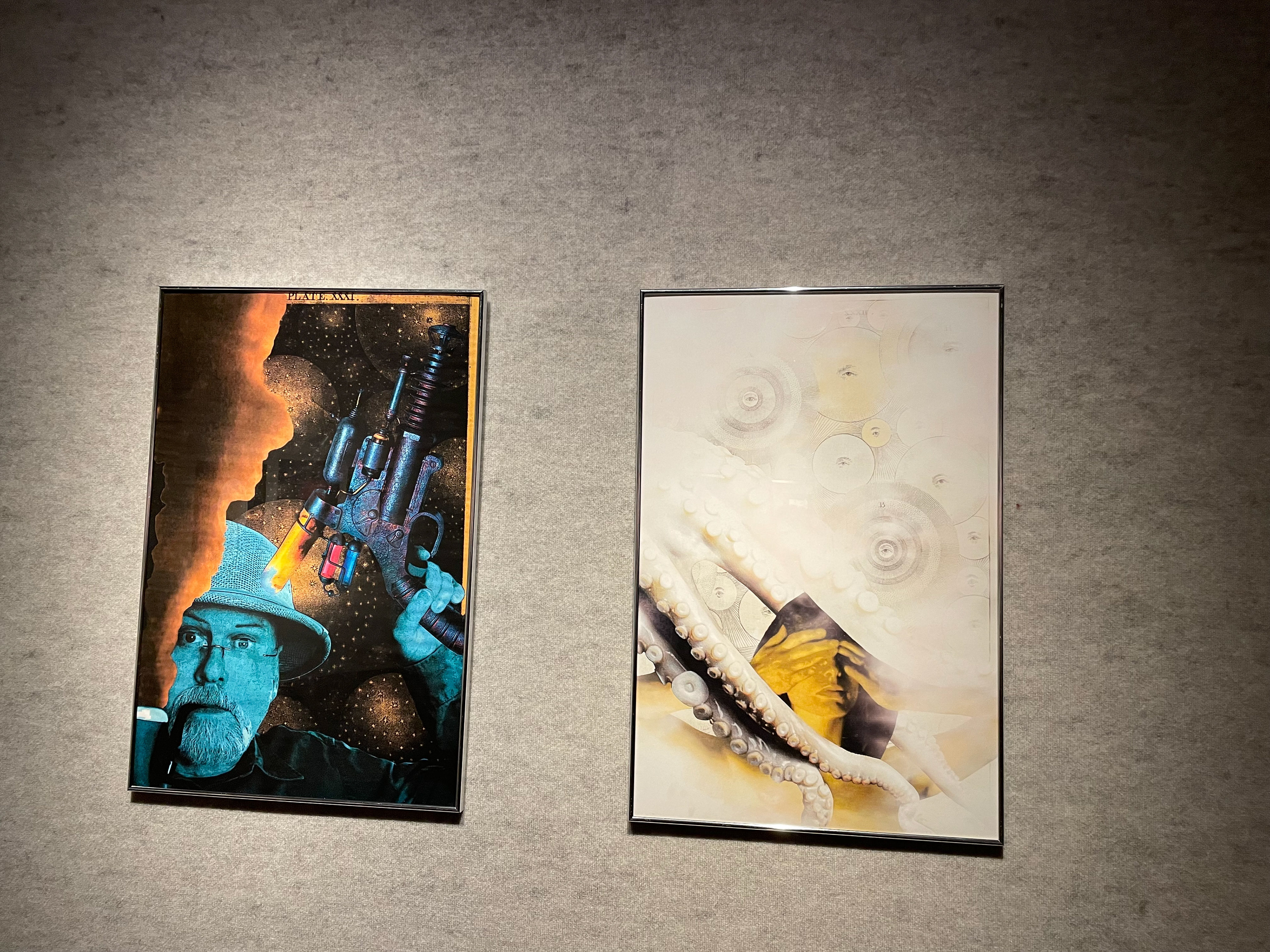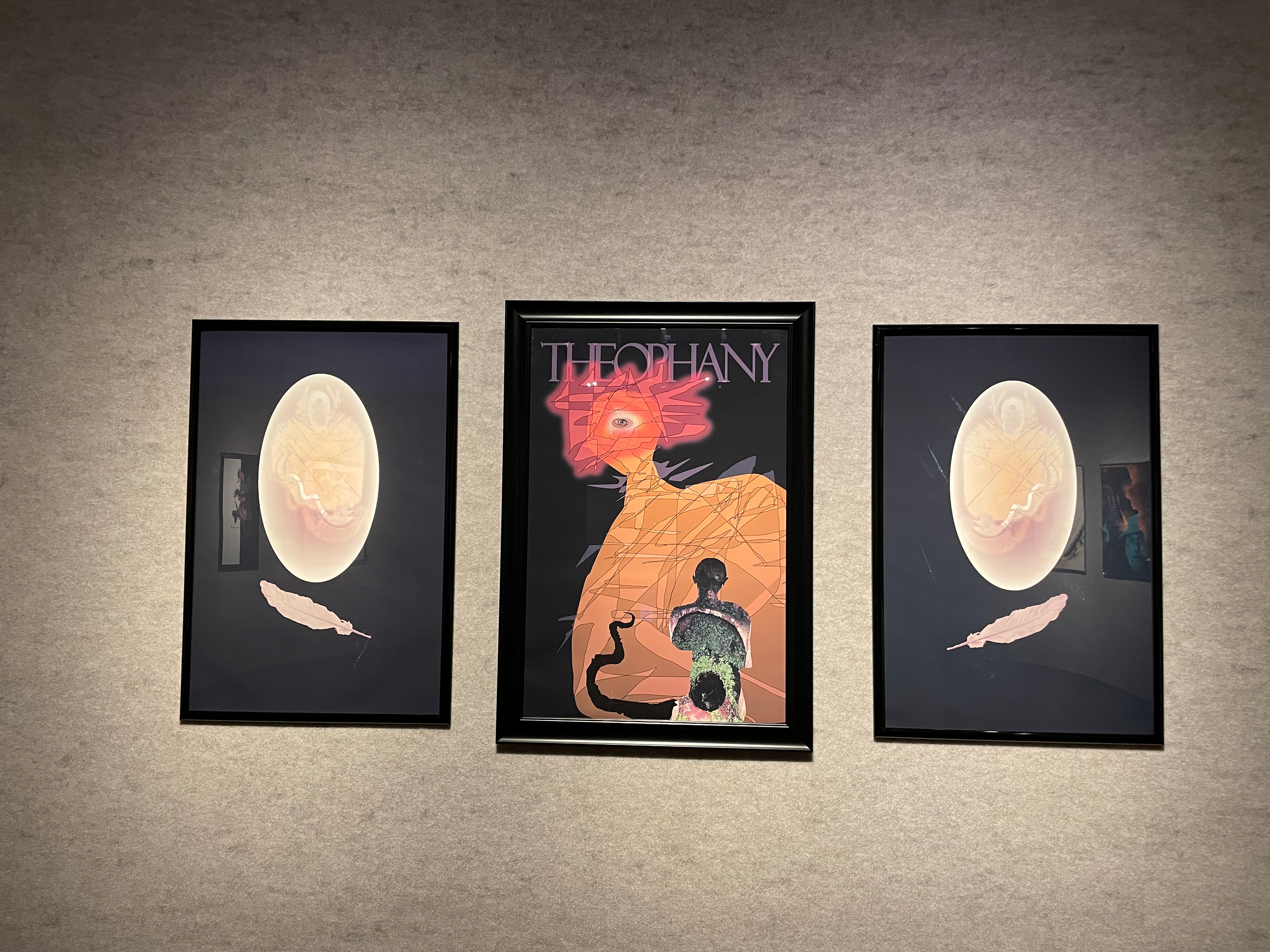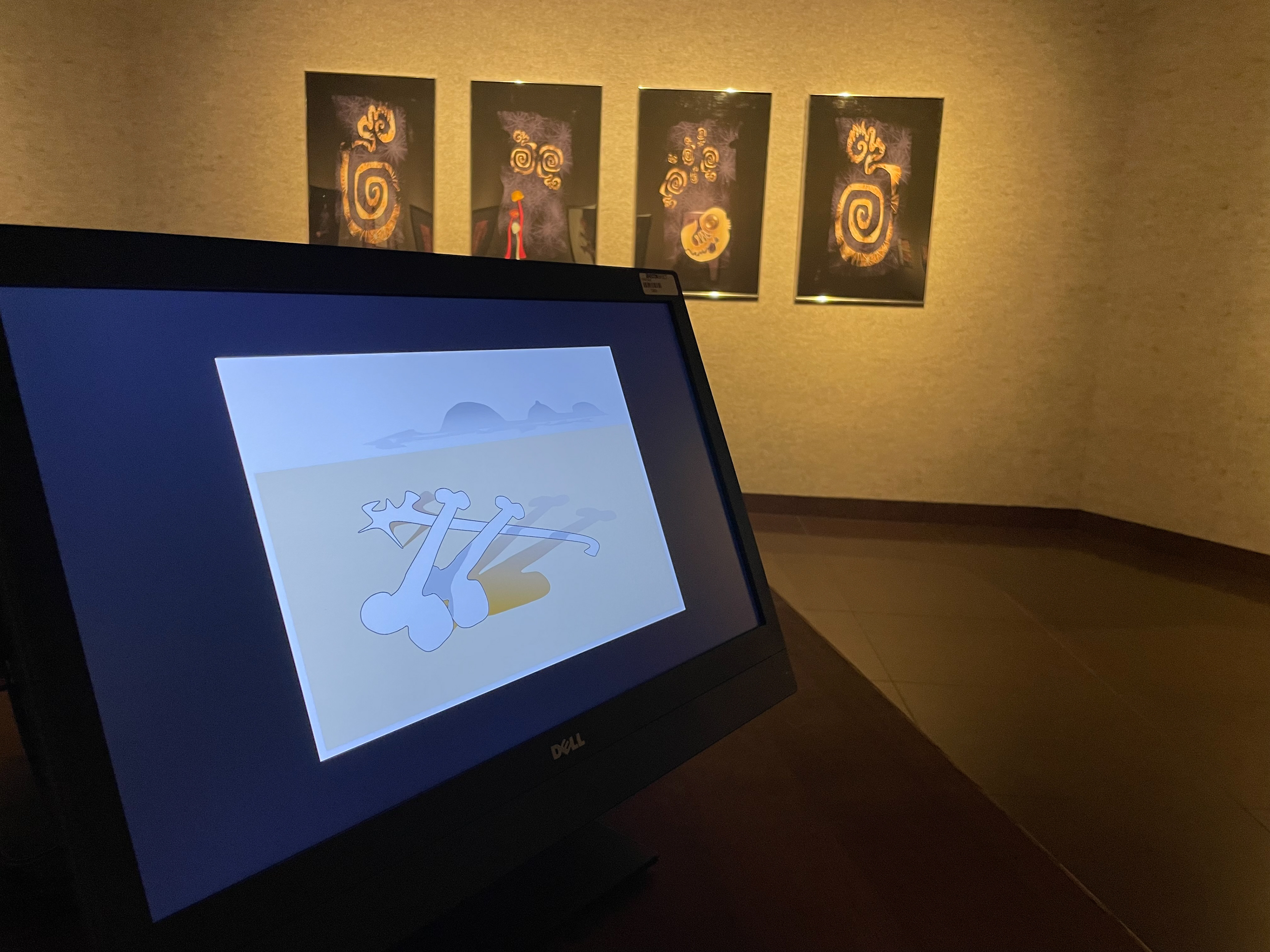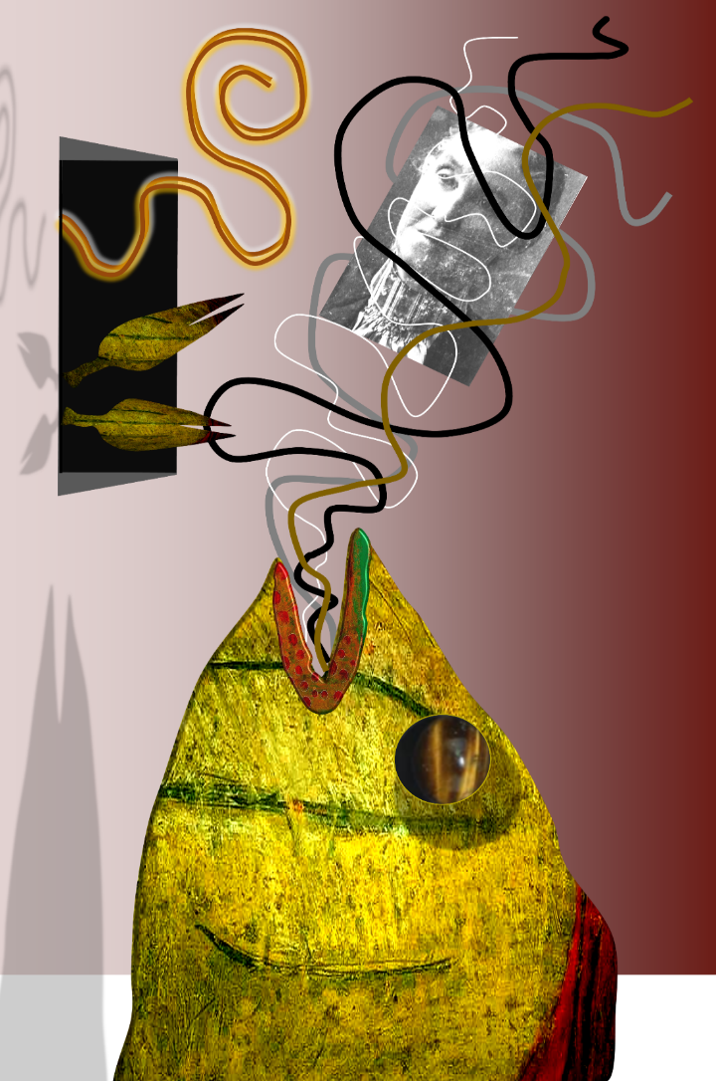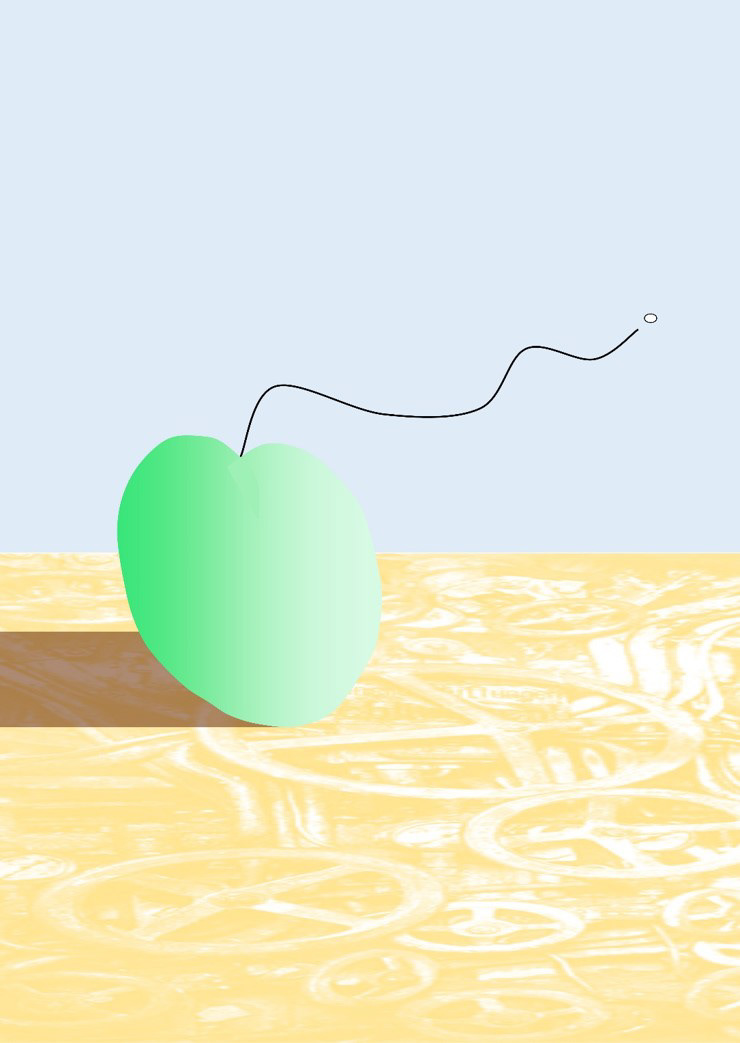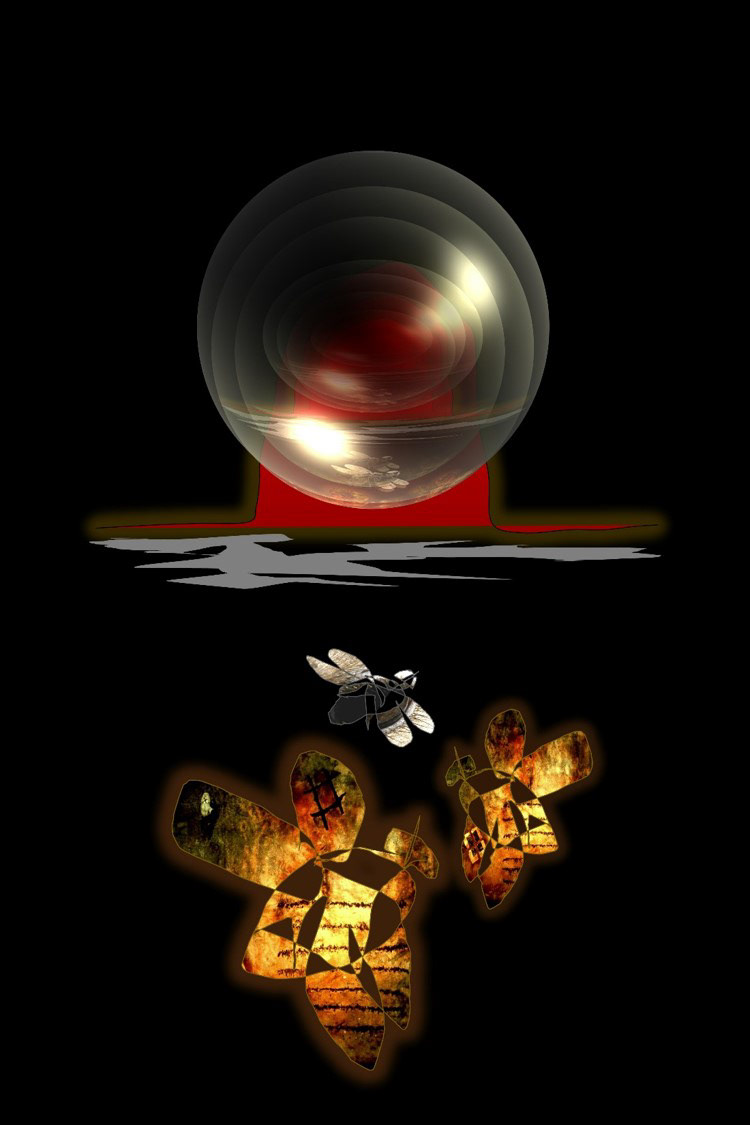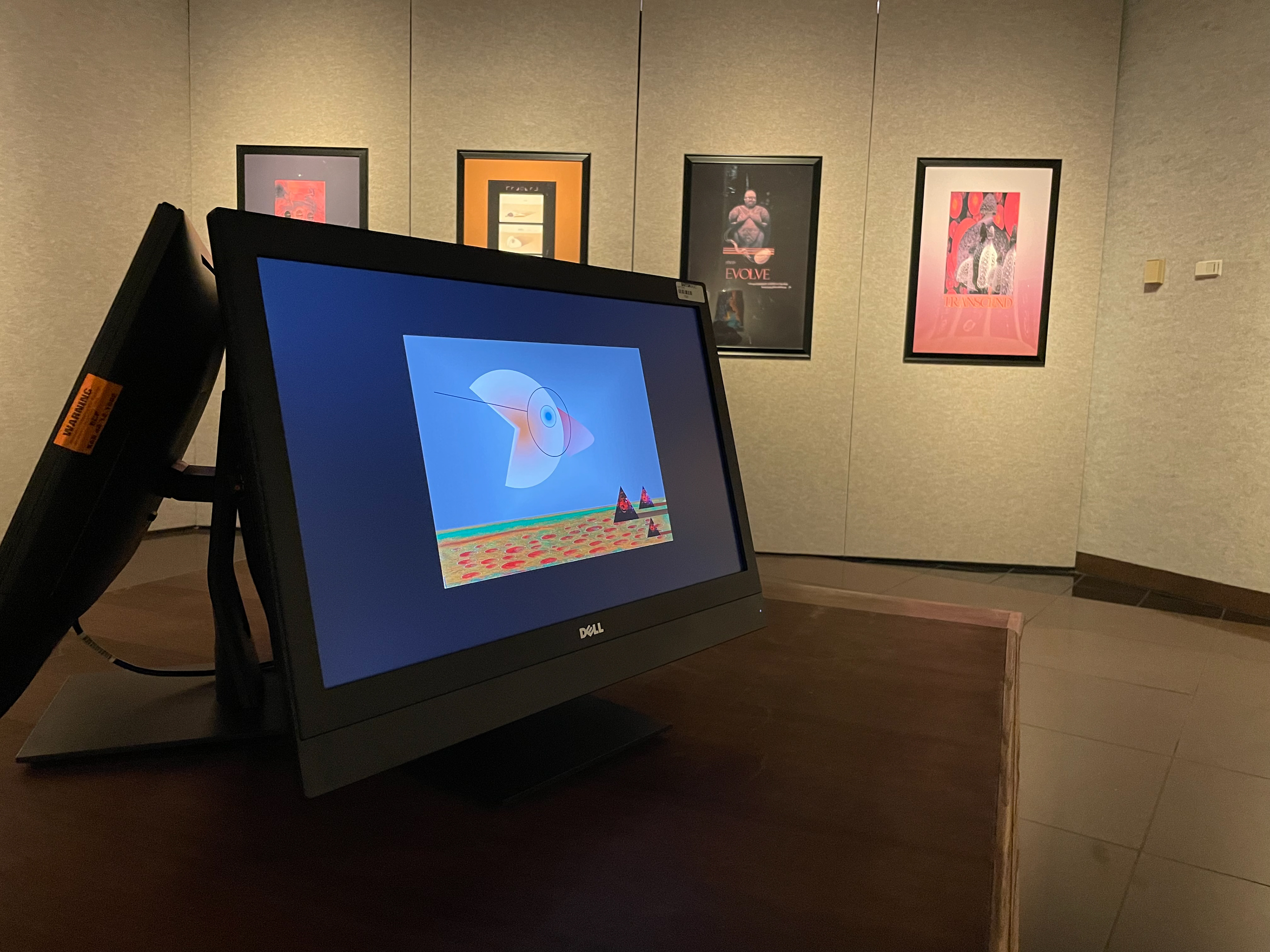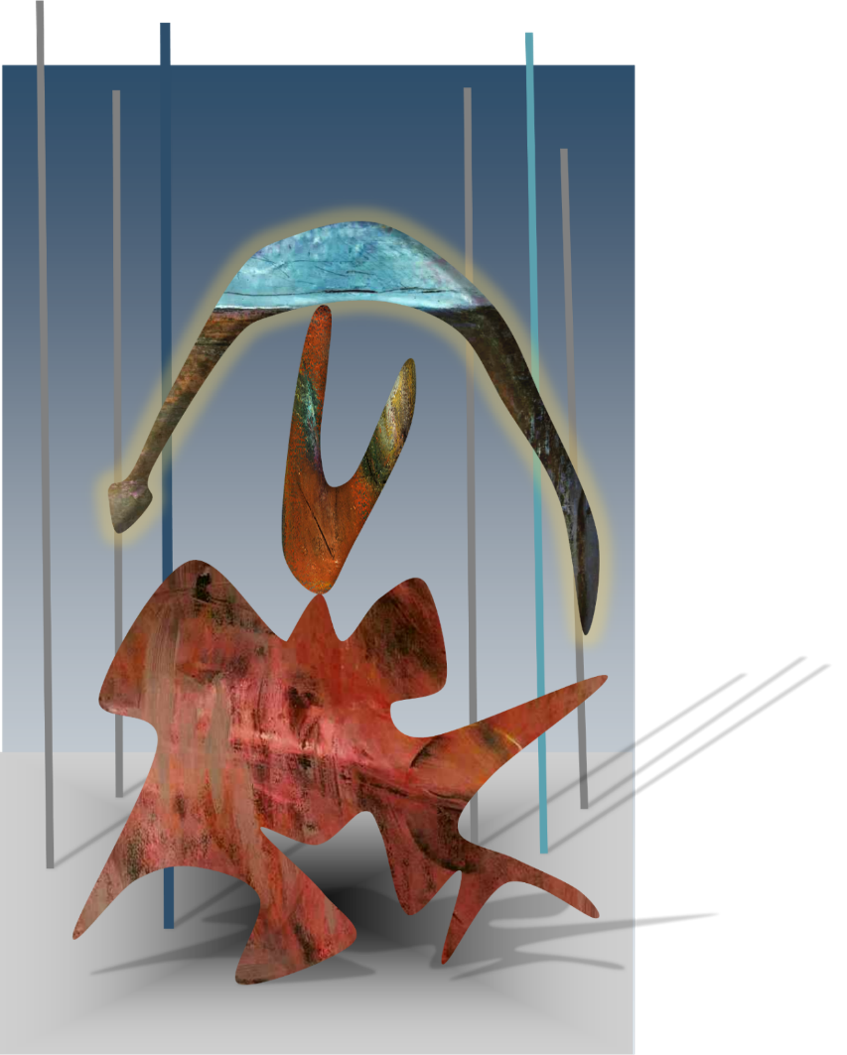Dave Barnes
September 1st - Ocrtober 13th
Reception September 1st @ 5:30pm
David Barnes is a way maker for art
Shafer Gallery director retiring on Aug. 31 2023
Shafer Art Gallery Director David Barnes is shown in one of his favorite photos of himself, taken in the tunnels beneath the college where past art students painted reproductions of primitive art in the Lascaux Caves in France. After 13 years as director of the gallery, Barnes will retire at the end of this month.
As the director of the Shafer Memorial Gallery, for the last 13 years, I have seen myself as a way maker. I wish to provide visitors with a friendly, non-threatening, accessible environment in which to encounter, perhaps for the first time, the richness of the art tradition.
After 13 years as director of the Shafer Art Gallery at Barton Community College, David Barnes plans to retire at the end of this month. For his final meeting with Barton’s Board of Trustees on Tuesday, Barnes presented a story/farewell letter about a meaningful experience in his life and how that is related to his time at the gallery:
The Shafer Gallery: Making A Way
It was toward the end of a nearly perfect early spring day in the Pryor Mountains of Montana. I had spent most of it working on the compound of my friends the Big Day family, who had lived for centuries on land that is now called the Crow Indian Reservation. We were sitting on the ground well broiled in front of an igloo-shaped hut made from willow boughs and blankets. The little hut from which we had just emerged was a sweat lodge.
I had met Bill and his father about a year earlier. He was a student in my Art Appreciation class. After class, he would occasionally drop by my office to ask questions about the lectures or parts of the text he didn’t understand. After satisfying the initial excuse for his visit, Bill would invariably shift the conversation to his family and to the rich store of oral tradition handed down to him from his fathers. The next semester I was invited to visit Bill’s “little church” on the Crow reservation. The “little church” was a sweat lodge and, as its nickname implies, it was Bill’s primary place of prayer, meditation and communication with spirit. I became a regular member of the congregation.
“Hey Billy,” Bill’s father elbowed him in the ribs. “I think maybe it’s time to tell the professor about your vision.”
Bill gave the ubiquitous native grunt in reply. He then explained that during his senior year in high school he had gone on a vision quest into the wilderness of the sacred Pryor Mountains. Bill’s father and grandfather are Crow medicine men. Unlike many Native American children, Bill had been raised in the traditional way. In his home the Crow language was spoken almost exclusively. Bill and his parents knew that he would have a difficult time succeeding in college. Bill went on his vision quest to find some hope and blaze a trail into the future. He was alone for three days and nights without food or water with only his red stone pipe and a woolen blanket.
“I prayed for a vision to ‘make a way’ for me. I prayed for three days and nights. Then I seen him, a white man, and the vision said, ‘he will make a way for you.’”
Bill looked a bit sheepish, and sporting an almost cherubic grin he said softly, “You are that man the vision showed me.”
“How can you be sure of that?” I replied. “How do you know I’m the guy?”
Bill reached out and touched my balding pate, my short beard and then pointed to my prominent front teeth.
“That man, he had kind eyes and a face like a beaver.”
We all laughed. Then I fought away tears.
I have come to know that to the Crow “to make a way” is to live out a vision. It can be a protocol or an attitude but it always implies a disciplined way of making an event or journey special. Special means sacred and uniquely meaningful.
As the director of the Shafer Memorial Gallery, for the last 13 years, I have seen myself as a way maker. I wish to provide visitors with a friendly, non-threatening, accessible environment in which to encounter, perhaps for the first time, the richness of the art tradition.
The Shafer Gallery is a special place where learning is a natural and enjoyable activity. You see, I believe that knowledge is constructed by human beings when information becomes meaningful. My job has been to design special experiences that give visitors the opportunity to create their own personal understandings of the art at hand. It has been my job to facilitate the process of making knowledge personal and therefore meaningful.
As I have said, to the Crow to “make a way” is to live out a vision. I hope, as Bill Big Day’s vision implied, that I have “made a way” for visitors to journey to special unexamined places. Thank you, Barton Community College and Great Bend, Kansas, for that incredibly special opportunity.
Art allows folks the opportunity, however brief, of experiencing their existence through a new set of eyes.
Coming to Great Bend
Born in Abilene, Texas, Barnes was raised in Springfield, Mo. He earned a Master of Arts degree from Missouri State University and a Master of Fine Arts at Bard College, in the hamlet of Annadale on Hudson in N.Y. David and his wife Krystall Barnes met in Montana and they were living in Oklahoma before they moved to Great Bend.
“I had reached a point in my career where I was looking to try something a little bit different. I had been an academic, teaching classes for 30 years or so.” He saw the advertisement for the gallery director position and decided to check it out, even though he was skeptical.
“I honestly didn’t think there’d be anything in central Kansas that would entice me to move out here,” he said. “And when I got here, I was so surprised because of the quality of the gallery and how welcoming the folks who worked on the campus were. Basically, they seduced me. And so I decided to give it a go.”
Krystall has also worked at Barton for several years and is now the director of grants. She will continue working there after David retires.
Artist Rodney Wood, who now lives in Hoisington, said Barnes is a kindred spirit and had a lot to do with his decision to move here from Trinidad, Colo. He was exploring places he might move to and wanted something special.
“We were really surprised at the gallery,” Wood said, noting the quality of exhibits, especially being in a small town.
“I’m not easily impressed,” said Wood, who has himself curated close to 300 exhibitions and served as an art educator and jurist. “I was impressed.”
The more he looked into the catalog of past shows, the more impressed he became. “They were national-level shows,” he said.
Barnes deserves much of the credit for that. Wood’s own “Magic Realism” paintings were featured in an exhibit at the Shafer earlier this year. He said it was “one of the best shows I ever had.”
Barnes the artist
On Sept. 1, the Shafer Gallery will open its next exhibit, a retrospective of posters designed to advertise some of the exhibits during Barnes’s 13-year tenure. (At 5:30 p.m., the gallery will also unveil a sculpture to be added to its permanent collection by world-renowned artist Kris Kuksi.) There will be light refreshments and comments from Barnes.
David and Krystall Barnes are also artists. Both of them are featured in “Salon 50,” an exhibition and fundraiser at the Salina Art Center, running from Aug. 13 through Oct. 15. The opening reception for this exhibit will be from 5-7 p.m. Friday, Aug. 25, at the art center, located at 242 South Santa Fe Ave. in Salina.
Now that he is retiring, Barnes said he hopes to have more time to devote to his own art.
“I have an MFA in painting and when I was at Montana State I had a wonderful little foundry I got to work with, so I did a lot of bronzes, sculptural work,” he said. “I’ve never stopped making art, but I’ve never had the time to really focus and hone in the way you have to come up with a good body of work.”
Barnes said he loves what he does.
“Art allows folks the opportunity, however brief, of experiencing their existence through a new set of eyes. To maybe have a moment of childlike wonder experiencing the world as though they had never seen it before. Great art is immersive, not directive. It doesn’t try to teach us anything, but rather gives us permission to slip out of our usual containers of practicality and prejudice and see new connections and new beauty,” he said.
“Artists create a place of connection between this world and the world beyond,” he continued. Barnes recalled how he once asked a Crow artist friend, “Why do you make art?”
“He answered after a long pause, ‘To be alone with ghosts.’ That is probably the best explanation for why I love to make images as well.”

